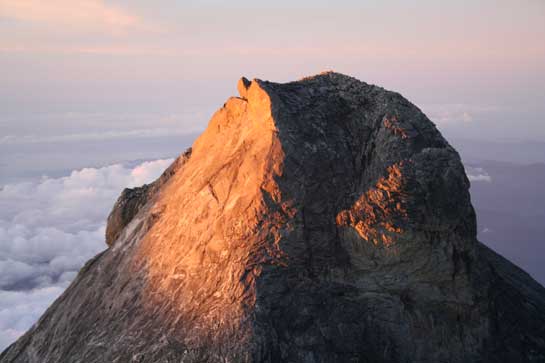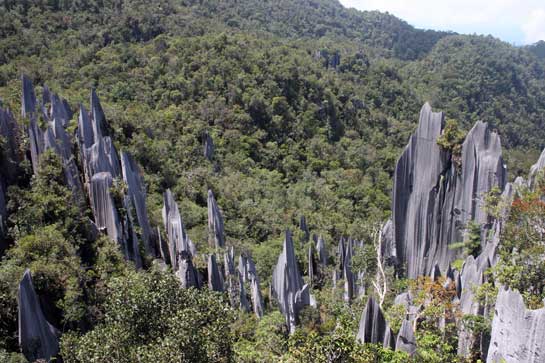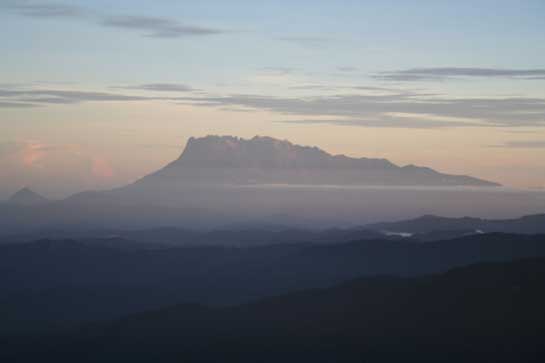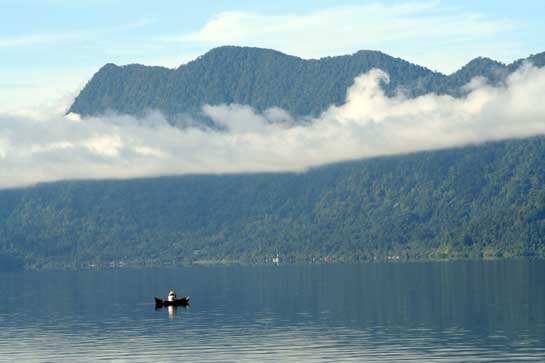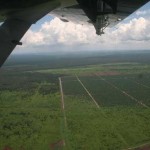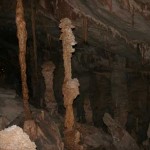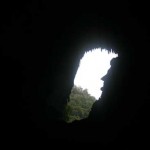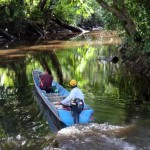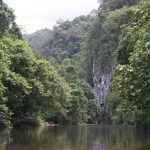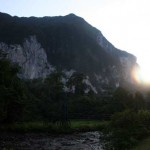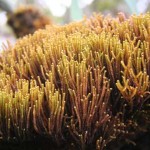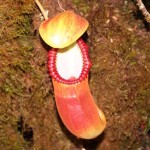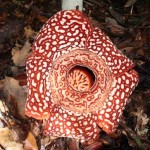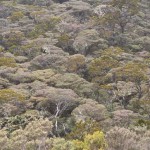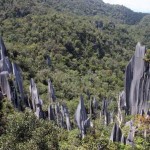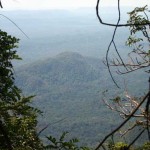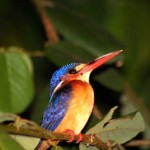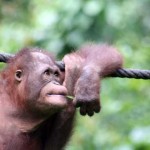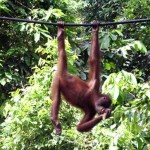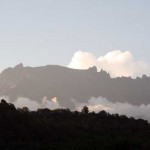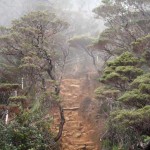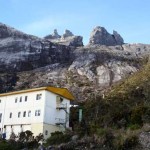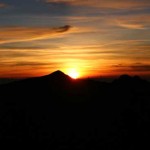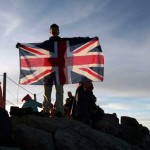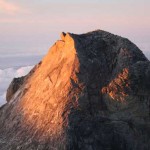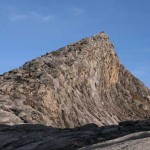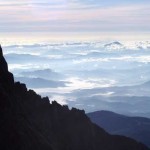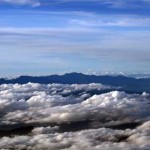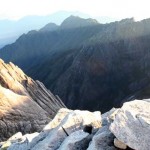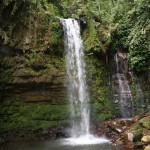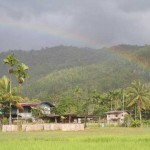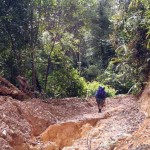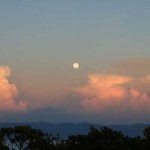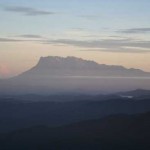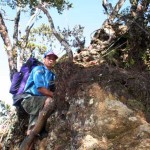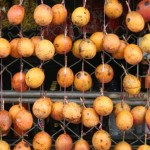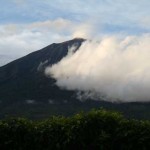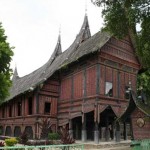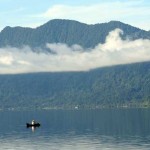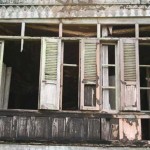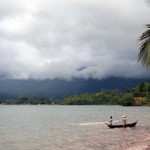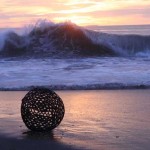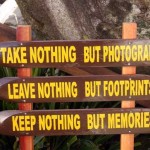Being back in the tropics was quite a change of climate from my last expeditions. I experienced jungle life at its best (and wettest), climbed high peaks and experienced differing cultures and customs. Volcanic activity halted one of my climbs and a boating accident almost cost me dear, but once again I have had an incredible adventure!
It sounds quite a mouthful and it’s an awful lot to explore in four weeks. I flew almost 25,000 km (15,500m) and experienced surroundings ranging from Volcanic Slopes to Tropical Rainforest and Barren Altitude Plateau. Fantastic wildlife is abundant from the word go and the people are extremely friendly – quite an advantage when you are pushed for time! I joined an Exodus trip for the first half of my journey to see more of Borneo and it’s wildlife before setting off later to climb high into the mountains.
Nestling in Gunung Mulu National Park these caves are the biggest in the world and are still being explored and mapped. Their size is hard to describe – they really are that large. The entrance to Deer Cave alone will hold the equivalent of two St. Pauls Cathedrals! Gigantic Stalactites and Stalagmites dominate the scenery and large multiple entrances allow light to beam inside from many angles. The lightshow is spectacular and allows nature to gain a foothold deep inside the bowels of these eerie chasms. Many are inhabited by Bats and Swiftlets which fly day and night picking insects out of the sky. The cool air was a welcome respite from the heat of the jungle, but the smell of Guano was overpowering!
I hadn’t trekked in the jungle for 8 years, but little has changed. Leeches still suck your blood, mosquito’s bite and frustrate, and the rain pours. It might sound like your version of hell, but it is home to many fantastic birds, mammals and insects. I saw plenty of wildlife ranging from Proboscis Monkeys, Macaques, Wild Boar, Monitor Lizards and even a couple of wild Orang-Utans. Nature surrounds you from every side and you soon realise that you are the odd one out. Peaceful days are replaced by deafening nights as the insects come alive in their thousands. I highly recommend earplugs!
Standing at 1750m (5740ft) Mt Api is a well climbed peak. Ladders and ropes protect the harder sections whilst the jungle slopes demand your complete concentration due to the number of vines and roots you can fall over. The summit itself is inspiring enough, but the view is incredible. Opposite stand dozens of razor sharp limestone pinnacles – some 45m (148ft) high. They tower above the jungle like rows of teeth facing towards heaven. I have never seen anything quite like them anywhere else in the world. After helping guide a few people up the mountain another challenge arose – getting people back down. This is where I come into my element and though it was dark when we arrived, but I didn’t care. I never leave people on the mountain to struggle on alone. I have been there too many times myself.
River travel is the easiest way to get around in the jungle. Natures natural highways allow speedy travel between villages and settlements. You may have to get out and push once in a while, but that’s all part of the fun. Sinking is something else. As our boat rounded a corner and entered a rapid she struck a rock, rolled over and threw everyone into the water. I came up after a few seconds and tried to make for shore, but before I could move another craft had entered the flow and was heading straight for me. In a flash I had grabbed the speeding boat and pushed it to one side. I made for shore and got my breath back – it had been a critical moment. Thankfully no one had been injured, but we were all shaken and soaked along with all our equipment. We continued our journey once our boat had been re-floated, but I felt wary of river travel for the rest of the trip.
Created in 1964 and one of only four Orang-Utan sanctuaries in the world, Sepilok has 40 sq. km of jungle in which these wonderful primates can live in peace. I say peace, but at feeing time they come out of the forest to the delight of hundreds of camera clicking tourists. It’s like a media circus with the paparazzi on hand! I realize that places like this have to exist if the Orang-Utans are to survive, but wouldn’t it be better if they could live in the wild where they belong? Many youngsters are rescued from Oil Palm plantations or have been found as pets. It’s a sad world that we are creating if we have to herd nature into small reserves to just survive.
The highest point between the Himalayas and Iran Jara, Mt. Kinabalu stands at 4095m (13,431ft) and towers above the surrounding hills. First climbed in 1851 by Sir Hugh Low she is now visited by over 30,000 people a year. The climb takes two days – firstly through wooded slopes to the hut at Panar Laban where you can rest and take in the sunset, before setting off at 2:45am the next morning to get to the summit for sunrise. It’s impossible to get lost – you must have a guide and the procession of head torches is unmistakable. There were 160 others up there with me! I stood in the summit at 5:30am and took in an incredible sunrise. Waves of orange light cast themselves over the barren plateau drawing fantastic shadows and bringing a warmth of their own to my body and soul.
Independently I made my way into the Crocker Mountains to climb Sabah’s 2nd highest Peak. Friends working in Brunei had told me that it was a must – I was not disappointed. Mt. Trus Madi stands at 2642m (8666ft), so is much lower than Mt. Kinabalu, but a great deal harder to climb. There are no wide paths here, only jungle tracks and sheer edges. My guide and I were the only people on the mountain. We drove over rutted logging roads before climbing dense and dangerous jungle strewn with fallen trees and mud slopes. We camped at the summit and hoped for a peaceful night with a campfire. However the weather had other ideas and monsoon like rain fell followed by a spectacular lighting storm. I lay in my tent watching it illuminate with every strike. It felt a bit hairy up there let me tell you, but we returned the next day through fields of deep mud and rivers swollen to bursting. I highly recommend the climb if you have an adventurous spirit, but beware, permits are becoming harder to get and numbers may well be restricted due to forestry concessions. My thanks to the Forestry Department and Tambunan Village Resort Centre for helping me in this climb. Also thanks also to Terra Nova for supplying a tent that kept me dry!
Standing at 3805m (12,480ft) high Kerinci is the highest mountain in Sumatra. I flew from Kota Kinabalu in Borneo to Padang in Sumatra, and then bounced around for six hours in a bus crossing the mountains to the village of Kersik Tua. Surrounded by lush tea plantations, Kersik Tua is the best place to start your climb. Unfortunately Mother Nature had other ideas… Gunung Kerinci is a volcano and only three weeks before I arrived a small eruption had begun. The high slopes were covered in fresh ash and carbon monoxide gas filled the air. It was not the place to be! It was a great disappointment to have travelled so far and then to find out that the climb was off, but I relaxed in the Kerinci Selat National Park, climbed to the highest volcanic lake in SE Asia at Danau Gunung Tujuh, and gathered what information I could about the mountain. I will return!
It was almost ten years since I last came to Bukittinggi and little has changed. The place is still easy going and beautifully cool compared with many other equatorial towns. I walked into the magnificent Sianok Canyon, talked with other travellers and toured the town to rekindle old memories. Minangkabu culture is predominant here with traditional pointed roofed buildings standing above the skyline by the dozen. The town is suffering badly due to the recent bombings in Bali, which have frightened many people away, but it is worth a visit in my book.
Surrounded by almost sheer 600m (1968ft) crater walls and in places over 480m (1574ft) deep, Lake Maninjau sits majestic and cloud bound. Its remote setting allows a feeling of ‘Heaven on Earth’ and it is one of my favorite places on this planet. Its waters are clear and warm, the surrounding jungle and cliffs are spectacular and it’s climate is all its own. I chose to take a few days here before heading for the long flight back home. Fishermen lay nets silently at dawn, retrieving their catch at sunset. Cloudbursts come and go, filling the rice fields to bursting and life moves slowly on. I cycled 30 miles around the lake taking in all its beauty. It is idyllic. I recommend Maninjau to anyone who needs to escape the ridiculous pace at which we live our lives in the western world.
This trip had many ups and downs. Climbing Mt. Kinabalu and Mt. Trus Madi were the high-points (literally), but I also revisited old haunts and saw many new ones. I escaped with my life again and was unable to climb Guning Kerinci, but all in all it has been a successful trip to SE Asia.
The differences in Malaysian and Indonesian culture are stark and the landscape is not to be missed. I will return to Sumatra to climb again and no doubt spend more time exploring this wonderful piece of the world. My thanks to the Lonely Planet guides for keeping me on the right road and generally sane!
